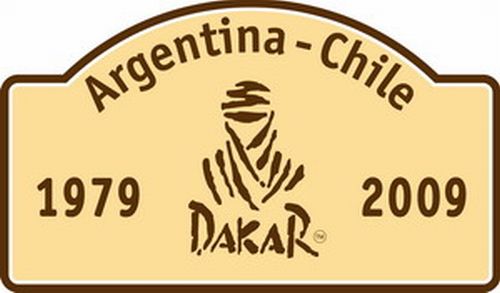The toughest Dakar: mass withdrawals lead to shorter stages
 La Serena, Chile - The end of the 2009 Dakar Rally in Argentina and Chile is still a week away, but it is already clear that it will be one of the toughest editions in history, even before the Atacama Desert almost certainly makes things worse from Tuesday.
La Serena, Chile - The end of the 2009 Dakar Rally in Argentina and Chile is still a week away, but it is already clear that it will be one of the toughest editions in history, even before the Atacama Desert almost certainly makes things worse from Tuesday.
Mass withdrawals have forced organizers to shorten stages in recent days, in an effort to retain reasonable numbers of competitors.
One fact is enough to illustrate the situation: there have already been more withdrawals this year than throughout the 2007 rally, when 511 vehicles left Lisbon and 300 arrived in Dakar. In 2006, 475 vehicles left the Portuguese capital and only 193 made it to the end.
The current edition of the rally is one of the longest since 1990, with 9,500 kilometres.
The longest took place in 1992 and went from Paris to Cape Town, with 22 stages across 10 countries, for a total distance of 12,427 kilometres.
In 2009, 40 per cent of the vehicles (224) had already pulled out of the race by the half-way stage of the competition, even before entering what everyone says is the toughest part of the rally, in Atacama.
In the desert, dunes that are 1,000 metres high and 100 kilometres wide promise a particular version of hell.
There are still 320 vehicles in action, said the firm Amaury Sport Organisation (ASO), which owns the rally. This means that, of the vehicles that set off from Buenos Aires on January 3, only 137 motorbikes, 111 cars, 58 trucks and 14 quads are still in the running to reach the finish line on Sunday.
However, competitors know that the rally is hard for everyone.
"It's not all over yet. This is where your physical condition starts to matter," said the Frenchman Cyril Despres, the winner of the past two motorcycling editions.
"Now we've got to tackle the Atacama. The hardest part of the race is about to start. There are still a good few days left. I'm going to carry on taking it day by day and trying to avoid problems," said motorcycle leader Marc Coma.
Spanish car driver Nani Roma agreed that the hardest part is yet to come.
"Now we're going to be faced with two or three very difficult days. Everything can change," he warned.
Moreover, extra difficulties could add their weight to the difficult Atacama stretch Tuesday and the Andean passage to Argentina at San Francisco, 4,700 metres above sea level.
Should it rain - as a result of the so-called "Bolivian winter" which causes summer rainfall in the area - things could get worse.
For this reason, the organization will make every effort to prevent a situation where only a handful of competitors make it to the end, race director Etienne Lavigne said on the rally's day off in Valparaiso.
Chilean President Michelle Bachelet, in turn, called upon drivers to be cautious.
"We want the competition to continue without setbacks or misfortunes," she stressed. (dpa)